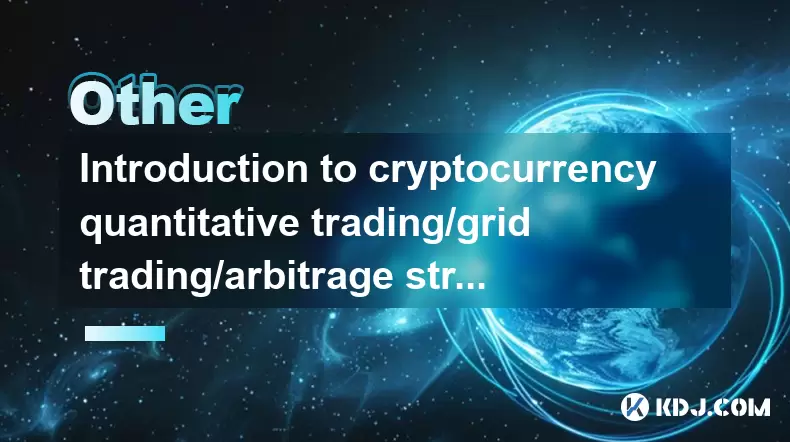-
 Bitcoin
Bitcoin $115200
-2.68% -
 Ethereum
Ethereum $3601
-5.16% -
 XRP
XRP $3.035
-2.96% -
 Tether USDt
Tether USDt $0.9997
-0.04% -
 BNB
BNB $764.5
-5.43% -
 Solana
Solana $168.1
-5.92% -
 USDC
USDC $0.9998
-0.02% -
 Dogecoin
Dogecoin $0.2090
-4.80% -
 TRON
TRON $0.3272
-0.49% -
 Cardano
Cardano $0.7306
-5.00% -
 Hyperliquid
Hyperliquid $39.16
-12.22% -
 Stellar
Stellar $0.3967
-4.96% -
 Sui
Sui $3.566
-5.95% -
 Chainlink
Chainlink $16.55
-6.57% -
 Bitcoin Cash
Bitcoin Cash $552.3
-3.90% -
 Hedera
Hedera $0.2516
-4.69% -
 Avalanche
Avalanche $21.99
-5.75% -
 Toncoin
Toncoin $3.621
-0.28% -
 Ethena USDe
Ethena USDe $1.000
-0.03% -
 UNUS SED LEO
UNUS SED LEO $8.951
0.02% -
 Litecoin
Litecoin $105.9
-3.59% -
 Shiba Inu
Shiba Inu $0.00001232
-5.00% -
 Polkadot
Polkadot $3.640
-5.55% -
 Uniswap
Uniswap $9.048
-7.03% -
 Monero
Monero $301.8
-1.51% -
 Dai
Dai $0.9999
-0.01% -
 Bitget Token
Bitget Token $4.334
-3.66% -
 Pepe
Pepe $0.00001064
-6.17% -
 Cronos
Cronos $0.1367
-5.78% -
 Aave
Aave $259.2
-4.59%
Introduction to cryptocurrency quantitative trading/grid trading/arbitrage strategies
Quantitative, grid, and arbitrage trading strategies can enhance crypto profits by leveraging algorithms, price grids, and market discrepancies.
May 28, 2025 at 11:35 am

In the dynamic world of cryptocurrencies, traders are constantly seeking innovative strategies to maximize their profits and minimize risks. Among the various trading techniques available, quantitative trading, grid trading, and arbitrage strategies stand out as popular and effective methods. This article will delve into these three strategies, providing a comprehensive introduction to each and explaining how they can be applied within the cryptocurrency market.
Understanding Quantitative Trading in Cryptocurrencies
Quantitative trading, often referred to as algo trading, leverages mathematical models and algorithms to execute trades. In the context of cryptocurrencies, quantitative trading involves using complex algorithms to analyze market data and make trading decisions based on predefined criteria. The primary advantage of this strategy is its ability to process vast amounts of data quickly and execute trades with minimal human intervention, which can lead to more consistent and less emotionally driven trading decisions.
To implement a quantitative trading strategy in the cryptocurrency market, traders typically follow these steps:
- Data Collection: Gather historical and real-time market data, including price, volume, and other relevant indicators.
- Model Development: Develop or select a mathematical model that can predict market movements based on the collected data.
- Backtesting: Test the model using historical data to assess its performance and make necessary adjustments.
- Automation: Set up an automated trading system that can execute trades based on the model's signals.
- Monitoring and Adjustment: Continuously monitor the performance of the strategy and adjust the model as needed to adapt to changing market conditions.
Exploring Grid Trading in the Crypto Space
Grid trading is another popular strategy among cryptocurrency traders, particularly those who prefer a more systematic approach. Grid trading involves setting up a grid of buy and sell orders at predetermined price levels. The idea is to profit from the natural volatility of the cryptocurrency market by buying low and selling high within a specific price range.
To set up a grid trading strategy, follow these steps:
- Choose a Trading Pair: Select the cryptocurrency pair you want to trade, such as BTC/USDT.
- Define the Grid Range: Determine the upper and lower price limits within which the grid will operate.
- Set the Grid Intervals: Decide on the number of price levels (intervals) within the grid range.
- Place Orders: Place buy orders at the lower price levels and sell orders at the higher price levels.
- Monitor and Adjust: Keep an eye on the market and adjust the grid as necessary to optimize performance.
Grid trading can be particularly effective in markets that exhibit a lot of sideways movement, as it allows traders to capitalize on small price fluctuations without having to predict the overall market direction.
Arbitrage Strategies in Cryptocurrency Trading
Arbitrage is a trading strategy that seeks to profit from price discrepancies of the same asset across different markets. In the cryptocurrency world, arbitrage can be particularly lucrative due to the fragmented nature of the market, where the same cryptocurrency can be traded on multiple exchanges with varying prices.
There are several types of arbitrage strategies that traders can employ in the cryptocurrency market:
- Simple Arbitrage: Buying a cryptocurrency on one exchange where the price is lower and selling it on another exchange where the price is higher.
- Triangular Arbitrage: Exploiting price differences between three different cryptocurrencies to make a profit.
- Statistical Arbitrage: Using statistical models to identify and exploit temporary price inefficiencies.
To execute a simple arbitrage strategy, follow these steps:
- Identify Price Discrepancies: Use a cryptocurrency price tracker or API to monitor prices across different exchanges.
- Calculate Profitability: Determine the potential profit after accounting for transaction fees and transfer times.
- Execute Trades: Buy the cryptocurrency on the exchange with the lower price and sell it on the exchange with the higher price.
- Transfer Funds: Transfer any profits back to your preferred exchange or wallet.
Arbitrage requires fast execution and careful consideration of transaction costs, but it can be a reliable way to generate profits with minimal risk when done correctly.
Combining Strategies for Enhanced Performance
While each of these strategies can be effective on its own, many traders find that combining them can lead to even better results. For instance, quantitative trading can be used to identify the best times to implement a grid trading strategy, while arbitrage can be incorporated to take advantage of price discrepancies within the grid.
To combine these strategies effectively, consider the following approach:
- Use Quantitative Models: Employ quantitative models to determine optimal entry and exit points for grid trading.
- Incorporate Arbitrage: Look for arbitrage opportunities within the grid to maximize profits.
- Automate Execution: Use trading bots or automated systems to execute trades based on the combined strategy.
By integrating these strategies, traders can create a robust trading system that leverages the strengths of each approach to enhance overall performance.
Practical Considerations and Risks
While these strategies can be highly effective, it's important to be aware of the practical considerations and risks involved. Quantitative trading requires a strong understanding of mathematics and programming, as well as access to reliable data and computing resources. Grid trading can be profitable in the right market conditions, but it can also lead to losses if the market moves significantly outside the grid range. Arbitrage requires fast execution and careful management of transaction costs to be profitable.
Additionally, all these strategies are subject to the inherent volatility and unpredictability of the cryptocurrency market. Traders must be prepared to adapt their strategies and manage their risk exposure carefully to succeed in this environment.
Frequently Asked Questions
Q: Can these strategies be used by beginner traders?
A: While quantitative trading and arbitrage may require more advanced knowledge and resources, grid trading can be more accessible to beginners. However, all traders, regardless of experience level, should thoroughly understand the strategies and risks involved before implementing them.
Q: How much capital is needed to start using these strategies?
A: The amount of capital required can vary widely depending on the specific strategy and market conditions. Grid trading and arbitrage can be started with relatively small amounts of capital, while quantitative trading may require more significant investments in data and computing resources.
Q: Are there tools or platforms that can help implement these strategies?
A: Yes, there are numerous trading platforms and tools available that can help implement these strategies. For quantitative trading, platforms like MetaTrader and NinjaTrader offer robust capabilities for developing and executing trading algorithms. For grid trading, many cryptocurrency exchanges offer built-in grid trading tools. For arbitrage, specialized bots and APIs can help monitor and execute trades across different exchanges.
Q: How do transaction fees impact the profitability of these strategies?
A: Transaction fees can significantly impact the profitability of these strategies, especially arbitrage, where profits can be slim. It's crucial to account for all fees, including trading fees, withdrawal fees, and transfer fees, when calculating potential profits and deciding whether to execute a trade.
Disclaimer:info@kdj.com
The information provided is not trading advice. kdj.com does not assume any responsibility for any investments made based on the information provided in this article. Cryptocurrencies are highly volatile and it is highly recommended that you invest with caution after thorough research!
If you believe that the content used on this website infringes your copyright, please contact us immediately (info@kdj.com) and we will delete it promptly.
- Cardano Price, Pi Network, and Crypto Presales: What's the Buzz?
- 2025-08-02 08:50:12
- XRP Fund Success: Teucrium CEO Reveals Trillions on the Horizon
- 2025-08-02 09:10:12
- Challenge Coins: More Than Just Collectibles – A Military Tradition
- 2025-08-02 08:30:12
- Under the Radar: Hunting for 100x Crypto Gems in a Pi Network World
- 2025-08-02 08:30:12
- Bitcoin, Solana, and Altcoin Season: What's Hot and What's Not?
- 2025-08-02 07:10:12
- Toncoin, Rollblock, and the Token Offering Landscape: A New York Minute
- 2025-08-02 07:10:12
Related knowledge

What is the difference between a blockchain and a database?
Aug 01,2025 at 09:36pm
Understanding the Core Structure of a BlockchainA blockchain is a decentralized digital ledger that records data in a series of immutable blocks linke...

What is a hash in a blockchain?
Aug 02,2025 at 05:28am
Understanding the Concept of Hash in BlockchainA hash in the context of blockchain technology refers to a unique digital fingerprint generated by a cr...

What is a hash in a blockchain?
Aug 02,2025 at 04:43am
Understanding the Concept of Hash in BlockchainA hash in the context of blockchain technology refers to a unique digital fingerprint generated by a cr...

Who created blockchain?
Aug 02,2025 at 05:15am
What Is Blockchain and Why Does Its Origin Matter?Understanding who created blockchain begins with recognizing what blockchain actually is. Blockchain...

How to start a business using blockchain?
Jul 28,2025 at 12:36am
Understanding the Basics of Blockchain TechnologyBefore diving into the process of starting a business using blockchain, it's crucial to understand wh...

What is a token on the blockchain?
Jul 21,2025 at 07:00am
Understanding the Concept of a TokenIn the realm of blockchain technology, a token is a digital representation of an asset or utility that exists on a...

What is the difference between a blockchain and a database?
Aug 01,2025 at 09:36pm
Understanding the Core Structure of a BlockchainA blockchain is a decentralized digital ledger that records data in a series of immutable blocks linke...

What is a hash in a blockchain?
Aug 02,2025 at 05:28am
Understanding the Concept of Hash in BlockchainA hash in the context of blockchain technology refers to a unique digital fingerprint generated by a cr...

What is a hash in a blockchain?
Aug 02,2025 at 04:43am
Understanding the Concept of Hash in BlockchainA hash in the context of blockchain technology refers to a unique digital fingerprint generated by a cr...

Who created blockchain?
Aug 02,2025 at 05:15am
What Is Blockchain and Why Does Its Origin Matter?Understanding who created blockchain begins with recognizing what blockchain actually is. Blockchain...

How to start a business using blockchain?
Jul 28,2025 at 12:36am
Understanding the Basics of Blockchain TechnologyBefore diving into the process of starting a business using blockchain, it's crucial to understand wh...

What is a token on the blockchain?
Jul 21,2025 at 07:00am
Understanding the Concept of a TokenIn the realm of blockchain technology, a token is a digital representation of an asset or utility that exists on a...
See all articles

























































































